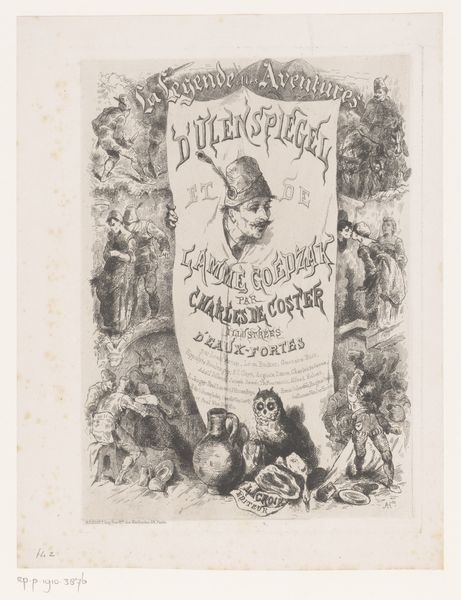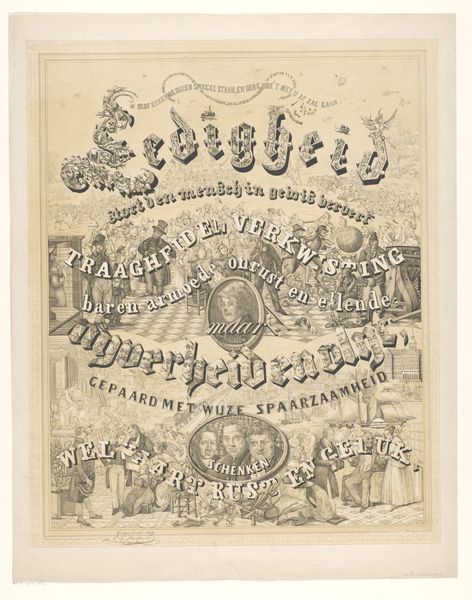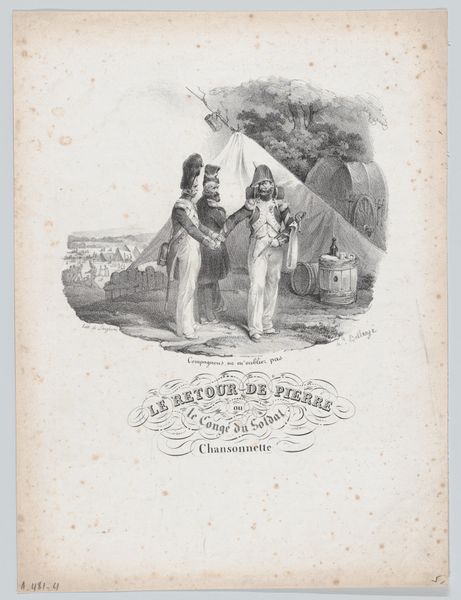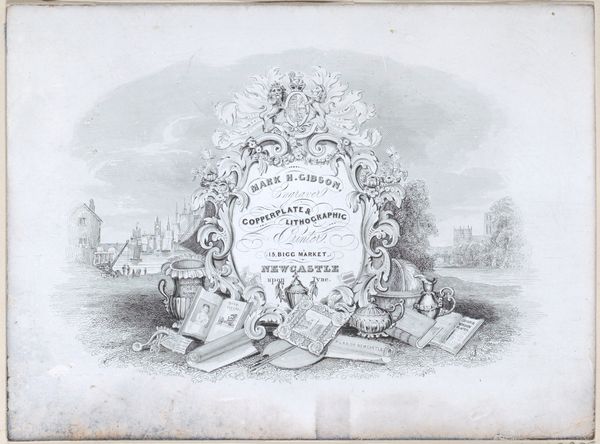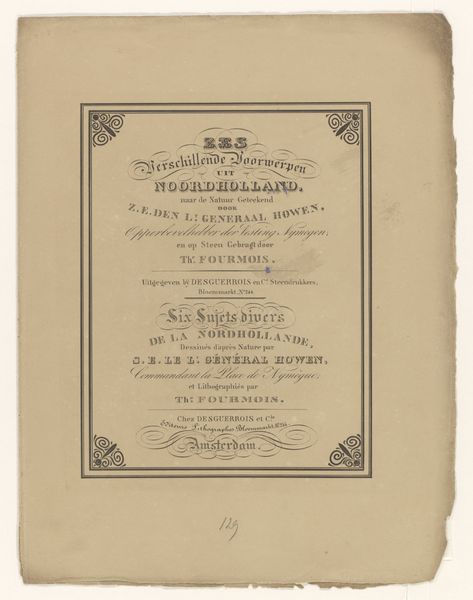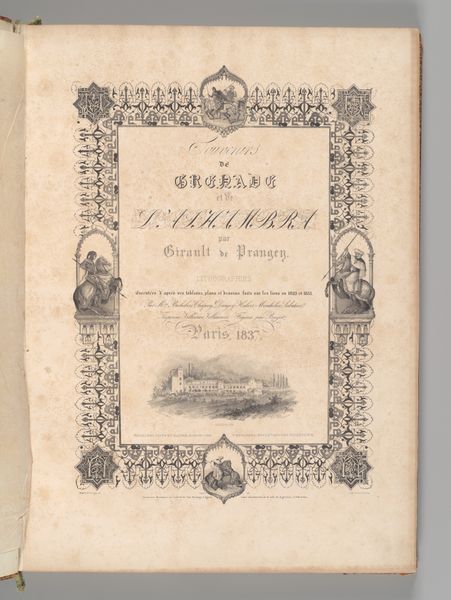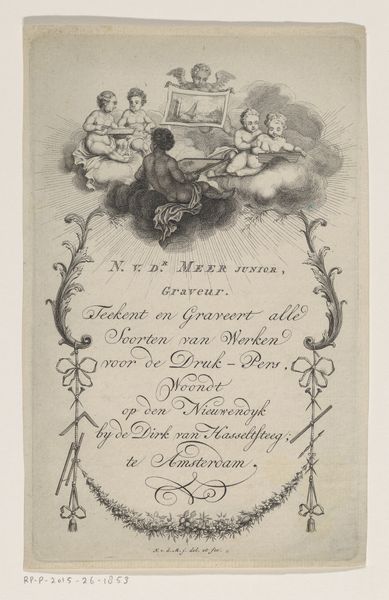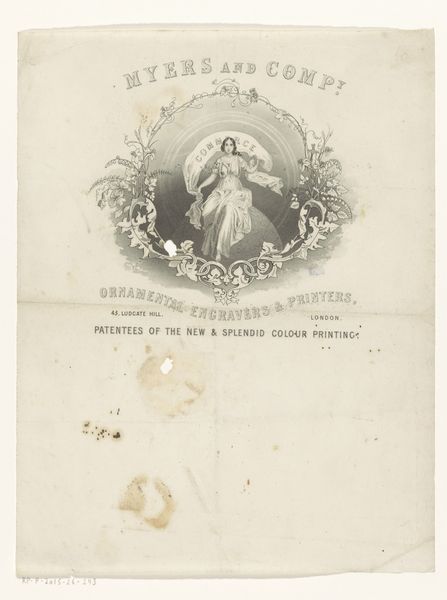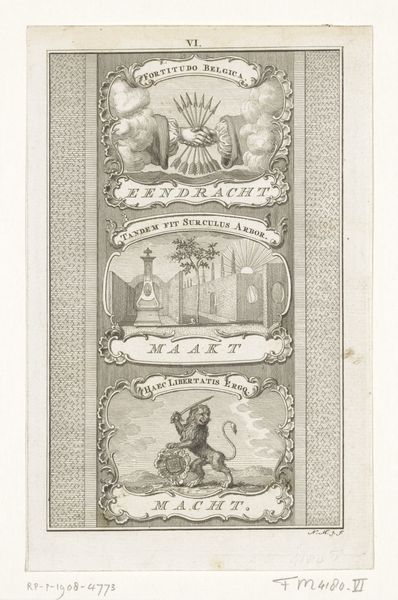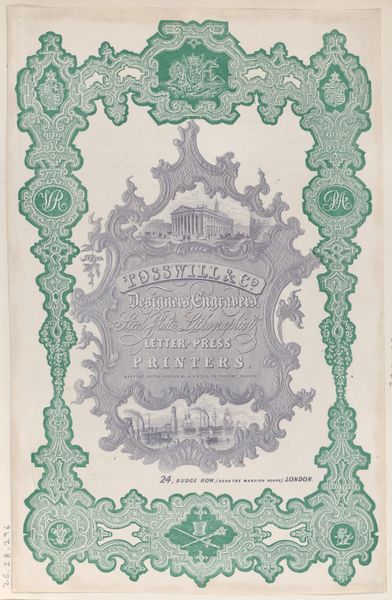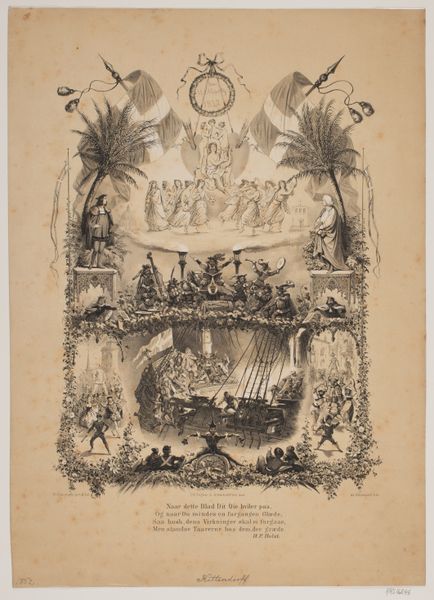
Trade Card for H. Fisher, Engraver and Copper Plate Printer 1700 - 1800
0:00
0:00
drawing, graphic-art, print, poster, engraving
#
portrait
#
drawing
#
graphic-art
# print
#
11_renaissance
#
history-painting
#
poster
#
engraving
#
calligraphy
Dimensions: Sheet: 8 1/4 × 5 1/16 in. (20.9 × 12.9 cm)
Copyright: Public Domain
Curator: Here we have an interesting trade card, dating from sometime between 1700 and 1800. It's titled "Trade Card for H. Fisher, Engraver and Copper Plate Printer," made by an anonymous artist and currently residing at the Metropolitan Museum. What's your initial take? Editor: Austere. Even though there's quite a bit going on visually, with the figure and the elaborate script, a certain rigidity prevails in its overall organization. What statement did H. Fisher wish to convey? Curator: Well, let's consider the visual structure. We see two distinct zones. The upper portion depicts a classically inspired muse surrounded by sample prints, perhaps symbolizing Fisher's artistic output. Her serene pose offers a sense of refinement, almost like branding in its contemporary design elements. Editor: True. But it also raises questions about who had access to this “refinement.” Fisher advertises services like “Portraits, Historical Subjects, Landscapes”—all suggesting a clientele among the privileged classes who could afford such luxuries. The detailed list reads as almost oppressively gendered too; this type of commission and acquisition would certainly have excluded all but the wealthiest and noblest women. Curator: Agreed. However, within the image, the meticulous engraving technique is noteworthy in itself. The line work, particularly in the lettering, displays considerable skill, acting as evidence of Fisher's capabilities. Notice how the composition emphasizes a verticality, typical of the trade cards used in that era. Editor: And let's consider Liverpool, where H. Fisher's business was located, then an active site of transatlantic trade. Copperplate printing would have supported the production of maps and bills of lading and documents, contributing to that very industry. It becomes challenging to unsee such contexts when assessing a historical image like this. This was labor performed in service of colonial ambition. Curator: Perhaps, but isn't it equally valid to appreciate the craftsmanship itself, irrespective of its application? Editor: It is precisely this capacity for nuanced artistic ability juxtaposed with what was being traded here – commodities – that needs exploring. The aesthetic quality becomes inseparable from its social and political setting. Curator: A worthwhile perspective to be sure; I suppose even simple marketing material can reflect wider narratives if we observe it from certain vantage points. Editor: Indeed. By analyzing historical ephemera like this, we uncover hidden power structures embedded within seemingly straightforward imagery.
Comments
No comments
Be the first to comment and join the conversation on the ultimate creative platform.
